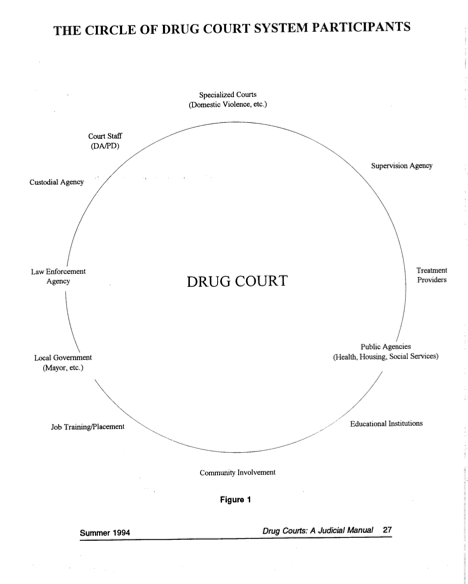Judge-Driven Sentencing Systems: Part 4
Sometimes it’s important to restate the obvious. The courts are the traditional place for sentencing and monitoring the supervision of offenders under their jurisdiction. Judges have husbanded those powers like no others. It’s therefore somewhat disquieting to find some states turning sentencing jurisdiction over to other agencies of government, even ones that are considered partners within the criminal justice system.
Nearly twenty years ago, when “Drug Courts: A Judicial Manual”, was published (JTauber, California Center for Judicial Education and Research,1994), it was noted that future drug courts (and ostensibly other courts modeled after drug courts) would need to create fully integrated systems centered on the court, to create the next generation of effective drug courts.
But even in a system built on collaboration and partnership, it was noted that “The courts stand in a unique position among service agencies; they are at the fulcrum, where agencies meet. Participating agencies are used to working closely with or under the supervision of the courts” (p.29).
Two decades later, whether applied to drug abuse or recidivism, those words hold true. Drug Courts and other special courts have proven the efficacy of judge-driven problem-solving courts. Handing over sentencing and/or monitoring of community supervision to probation or parole, custody or community-based agencies, isn’t smart or efficient, or cost-effective. Special Sentencing Courts need to work closely with their criminal justice and community partners, but also need to remain the focus of that circle of intervenors, retaining final control over the sentencing and supervision of the felon.
The next segment will look at the importance of creating sentencing tracks.


